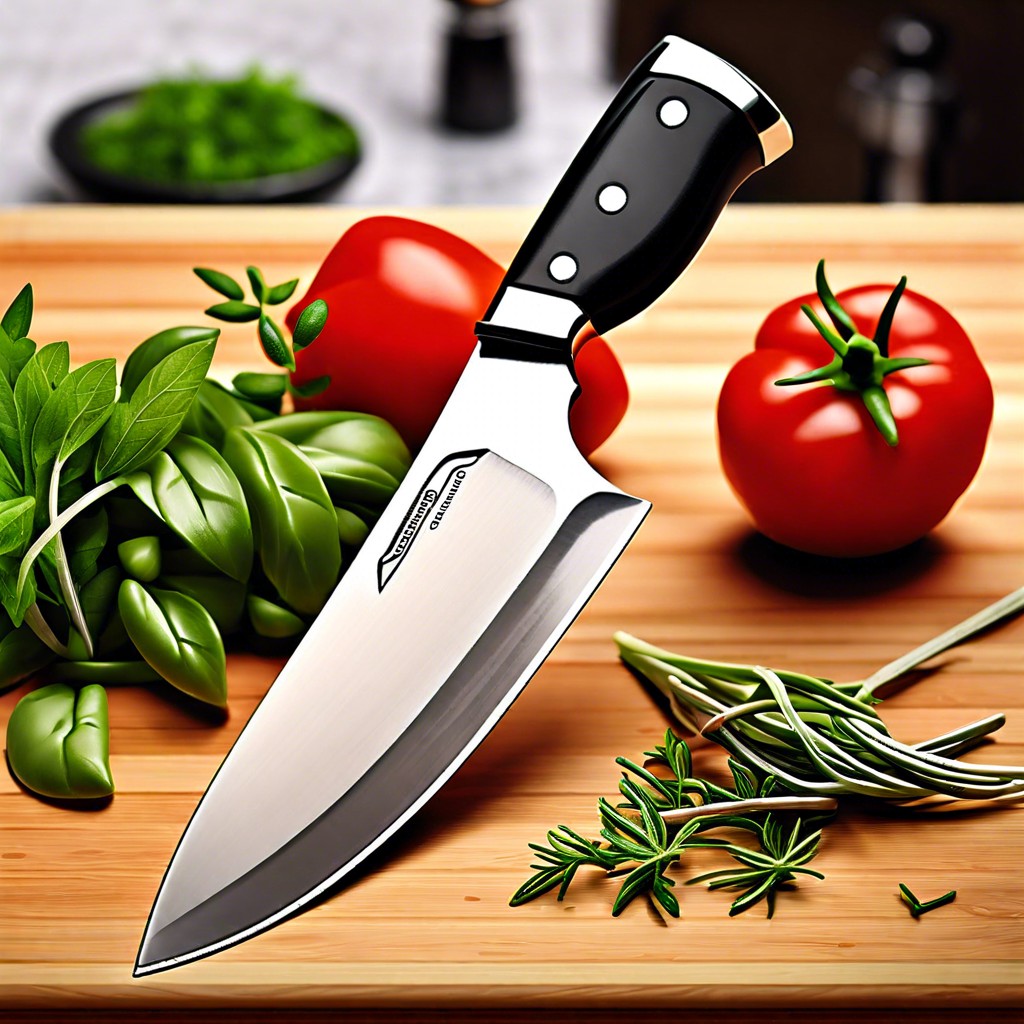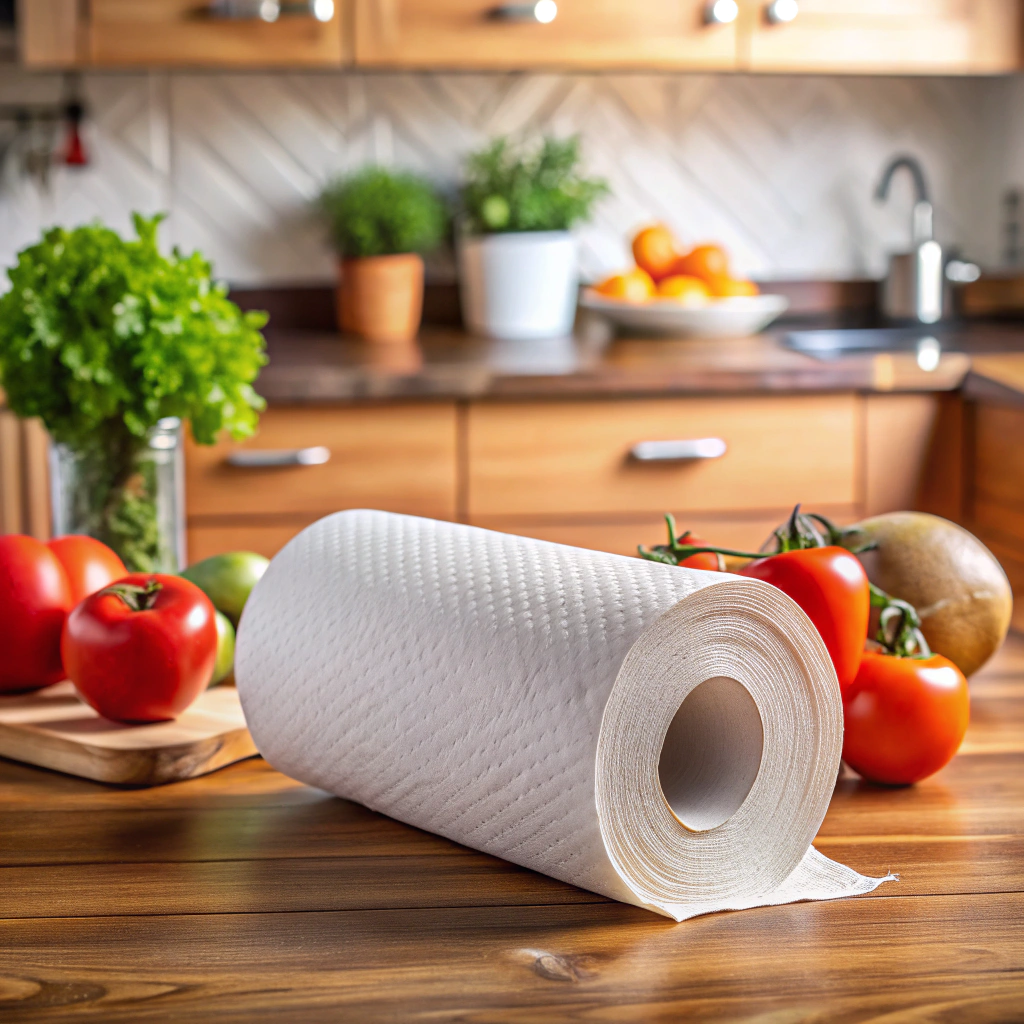Last updated on
Discover the must-have kitchen knives you’ll need to tackle any recipe with ease and precision.
Looking to slice, dice, and chop like a pro? You’re in the right place! This article covers everything from the must-have knives for your kitchen to tips on keeping them sharp and storing them safely. Whether you’re a newbie or a seasoned chef, we’ve got the scoop on essential knives and more. Ready to cut to the chase? Let’s dive in!
Key takeaways:
- Chef’s Knife: Versatile multitasker for all kitchen tasks.
- Paring Knife: Precision superhero for intricate tasks.
- Serrated Bread Knife: Perfect for crusty loaves and more.
- Boning Knife: Ninja of the kitchen for filleting.
- Nakiri Knife: Efficient veggie slicing superhero.
What's Inside
Chef’s Knife

This one is the multitasker, the Swiss army knife of your kitchen. With a broad blade that often spans around 8 inches, it can handle almost anything you throw its way.
- Slicing through hefty cuts of meat? No problem.
- Dicing onions without shedding tears? Easy peasy.
- It’s even great for mincing garlic and herbs.
The slightly curved blade lends itself perfectly to rocking motions, making quick work of vegetables. Its versatility means you’ll likely reach for it more often than any other knife. A good one should feel balanced in your hand with a comfortable grip, almost like an extension of your arm.
Invest in a quality chef’s knife, and it’ll become your trusty kitchen companion for years.
Paring Knife
Small but mighty. It’s the superhero of intricacy, perfect for those teeny-tiny tasks that demand precision.
Think about peeling an apple without wasting half the fruit. That’s the magic. Or deveining shrimp without making a mess. Slicing strawberries into perfect little hearts for that Instagram post? Easier than pie.
Because of its size, it offers excellent control. It’s light, quick, and comfortable to hold. Ideal for those delicate jobs where a chef’s knife feels like overkill.
Remember, the blade should be sharp enough to handle soft fruits and vegetables effortlessly. A dull paring knife is simply a small frustration machine. Not cool.
In a nutshell, if you ever need to make those artistic radish roses, this is your go-to. And it won’t complain about getting all the intricate stuff on its blade.
Serrated Bread Knife
This wavy wonder is perfect for slicing through crusty loaves without crushing them. Think of it like a saw for bread—just way cooler.
A serrated edge grips into tough exteriors, gliding through baguettes, bagels, and even tomatoes with ease. Yes, tomatoes! So, no more smooshed slices.
The longer the blade, the better; go for at least 8 inches. Shorter blades might struggle with larger loaves or squishy insides.
This knife isn’t just for bread. It’s also handy for cakes, fruits, and even carving roasted meats. Versatility at its finest.
Remember, never try to sharpen a serrated knife yourself. Leave that to the pros!
Boning Knife
Nimble and precise, this knife is the ninja of your kitchen arsenal. It gracefully maneuvers around bones and tight spots, making it perfect for filleting fish or deboning chicken. Think of it as your surgical instrument for meat prep.
Its thin, flexible blade lets you make clean cuts without hacking away half the meat. If you’ve ever found yourself battling with a stubborn chicken thigh, this tool is your new best friend. Ever wonder how pros get those perfect cuts? The answer is often this knife.
And let’s not forget versatility. It’s great for trimming fat and slicing through cartilage. Pro tip: keep it super sharp for the best results.
Nakiri Knife
Ever feel like slicing vegetables is a workout? Enter the slicing superhero. With its straight, thin blade, this knife glides through veggies like a figure skater on ice.
First up, that straight edge. Say goodbye to those awkward, uneven cuts. If you love precision, this knife’s got your back.
It’s got width! The broad blade is perfect for scooping up your beautifully sliced carrots or onions and tossing them into the pan without spilling half on the counter.
Whether you’re chopping herbs, dicing celery, or making paper-thin cucumber slices, it’s your go-to. Fast, efficient, and oh-so-satisfying.
Finally, let’s talk about style. With its elegant design, it’s the knife equivalent of a little black dress. You’ll look and feel like a pro every time you use it.
Now, doesn’t that make veggie prep sound way more fun?
Cleaver
This sturdy chunk of metal is like a superhero in the world of kitchen knives. It’s your best friend for heavy-duty tasks.
Chopping through bones? Check. Smashing garlic like a ninja? Double check. Cleavers are built to handle the tough stuff, making them indispensable for butchering meat or hacking through dense veggies like squash.
Despite its intimidating size, it’s surprisingly versatile. Slice through watermelon or break down a chicken with ease. Just imagine wielding it like a culinary Thor; it’s as satisfying as it sounds.
Make sure to grip it firmly. Safety first, after all. A cleaver’s weight does the work, so let your inner lumberjack relax. It’s not about brute force; it’s about finesse.
Honing Steel
You’ve got your shiny, sharp knives. Now, how do you keep them that way? Enter our unsung hero. It doesn’t actually sharpen but rather realigns the edge of your knife, keeping it in tip-top shape between those serious sharpening sessions.
Here’s what you need to do:
- Hold the honing steel vertically with the tip resting on a solid surface.
- Hold the knife at a 15-20 degree angle against the steel.
- Swipe the knife down the steel in a gentle arc – away from you, switching sides after each swipe.
- Repeat this 5-10 times per side.
Remember, a few swipes before each use can make a world of difference. Plus, you’ll look super professional doing it!
Knife Storage Options
Drawer, countertop, or wall? Your choice of knife storage can be as personal as your favorite kitchen hacks.
Drawer inserts keep things tidy and fingers safe. Make sure it’s a wooden or plastic insert, not metal, to preserve those edges. Plus, it stops knives from playing bumper cars.
Magnetic strips save counter space and look pretty darn cool. Mount it on the wall, and you’ve got a stylish knife display. Just make sure it’s strong enough to hold your heaviest cleaver, or you might have a surprise on your toes.
Countertop blocks are the traditional route. They keep knives within arm’s reach and can spruce up your kitchen decor. Look for those with slots that fit various blade sizes.
Knife guards are essential if you’re a bit of a nomad or dealing with limited kitchen space. Slide one on, and your knife’s edge gets instant 24/7 security. Perfect for chefs always on the go.
Choosing the right method means happier knives and safer hands. Mix and match to find what’s perfect for your kitchen kingdom.
Knife Sharpening Tips
Gotta keep those blades sharp, right? Here are some quick tips to keep your knives in tip-top shape:
First, invest in a good quality whetstone. Think of it as a spa day for your knives. Wet it, then run the blade at a 20-degree angle, alternating sides. It’s like yoga but for metal.
If whetstones sound too much like hard work, a pull-through sharpener can do the trick. Though they don’t offer the precision of a whetstone, they’re super handy and quick.
Regularly honing your knife with a honing steel can actually maintain the sharpness longer by realigning the edge of the blade. Imagine your knife getting its back straightened after slouching all day.
Never, and I mean never, put your knives in the dishwasher. The high heat and detergents will dull the blades faster than you can say “What’s for dinner?”
Finally, take your knives to a professional for a deep sharpening once a year. It’s like taking your car for a tune-up, but with fewer oil stains and more gleaming edges.
With these tips, you’ll keep your knives slicing through tomatoes like they’re made of butter!
Disposal of Old Knives
Picture this: you have an old knife that looks like it’s seen one too many horror movies. How do you get rid of it without any drama? First, you have to ensure it’s safely out of commission.
Wrap the blade in thick cardboard or multiple layers of newspaper. Secure it with heavy-duty tape. You want that knife mummified to avoid any surprise handshakes.
Next, check local guidelines for disposing of sharp objects. Some areas offer specific collection programs. Alternatively, consider dropping it off at a recycling center. Recycling centers often handle metal debris safely.
Some specialty stores also have knife-recycling programs. Give them a call and ask if they’ll take your old blade off your hands.
Another idea is to donate it. Many culinary schools or community centers are thrilled to receive usable knives, even if they look a bit vintage. It’s like giving an old soldier a second tour of duty.
Whatever you do, don’t just toss it in the trash unprotected. Nobody wants a garbage bag slasher movie.




